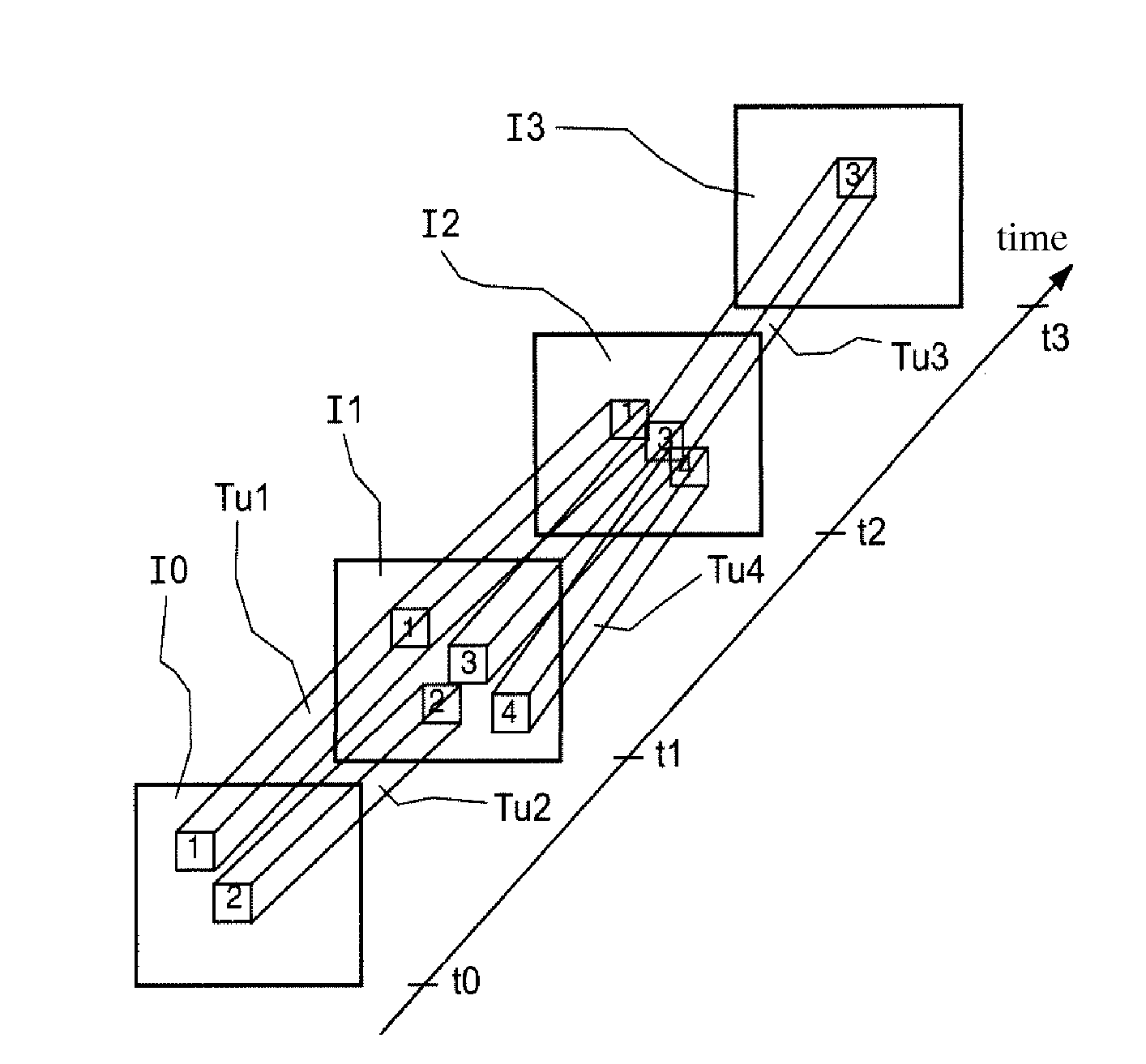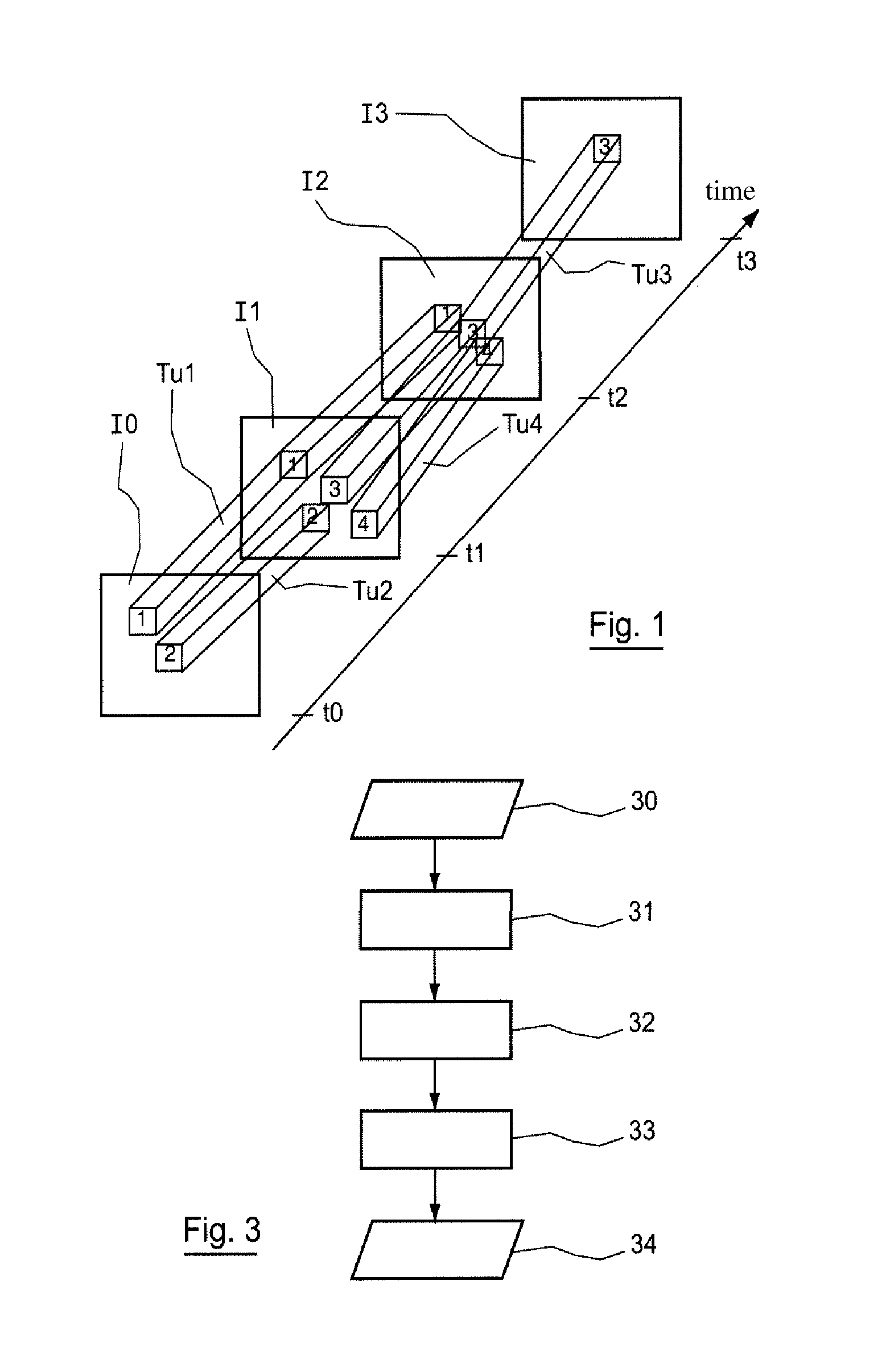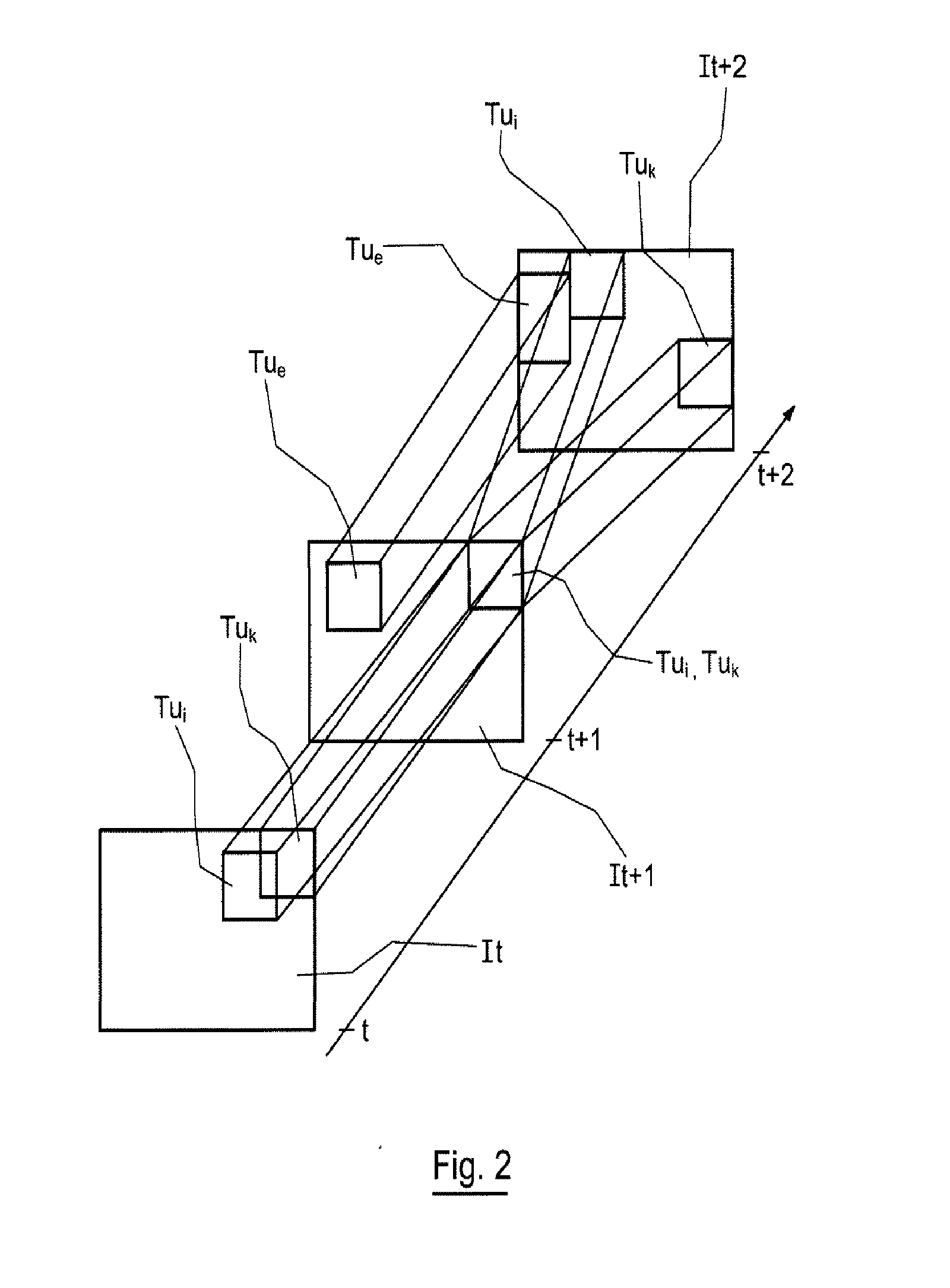Methods and devices for coding and decoding an image sequence represented with the aid of motion tubes, corresponding computer program products and signal
a motion tube and image sequence technology, applied in the field of coding and decoding of image sequences, can solve the problems of irregular meshes, poor representation of real motion, and cost overhead in terms of compression bitrate,
- Summary
- Abstract
- Description
- Claims
- Application Information
AI Technical Summary
Benefits of technology
Problems solved by technology
Method used
Image
Examples
Embodiment Construction
1. General Principle
[0127]The general principle of an embodiment of the invention relies on the coding and the decoding of a 2D or 3D image sequence represented with the aid of motion tubes.
[0128]An exemplary representation of a video sequence by motion tubes is presented in relation to FIG. 1.
[0129]Four motion tubes Tu1, Tu2, Tu3 and Tu4, extending between the images I0, I1, I2 and I3, corresponding respectively to the instants t0, t1, t2 and t3 of the video sequence are considered according to this example.
[0130]More precisely, a motion tube is defined as a set of pixels (square, rectangular block, or cube in 3D for example) and its characteristics are:[0131]an instant of creation, or start-of-tube instant,[0132]an instant of disappearance, or end-of-tube instant,[0133]a set of positions (xt,yt) or of displacements (dxt,dyt) dependent on time t, t lying between the instant of creation and the instant of disappearance of the tube,[0134]a texture optionally varying over time.
[0135]F...
PUM
 Login to View More
Login to View More Abstract
Description
Claims
Application Information
 Login to View More
Login to View More - R&D
- Intellectual Property
- Life Sciences
- Materials
- Tech Scout
- Unparalleled Data Quality
- Higher Quality Content
- 60% Fewer Hallucinations
Browse by: Latest US Patents, China's latest patents, Technical Efficacy Thesaurus, Application Domain, Technology Topic, Popular Technical Reports.
© 2025 PatSnap. All rights reserved.Legal|Privacy policy|Modern Slavery Act Transparency Statement|Sitemap|About US| Contact US: help@patsnap.com



